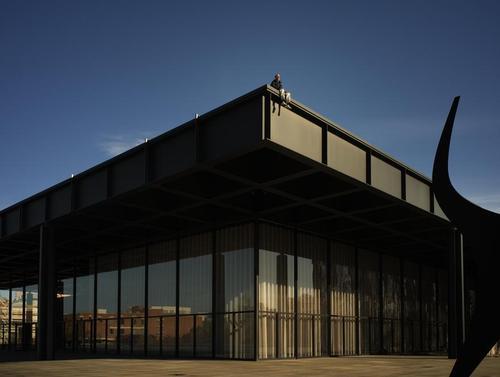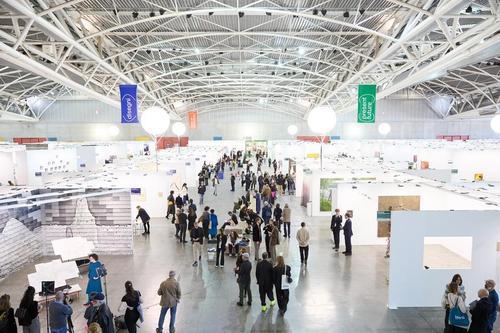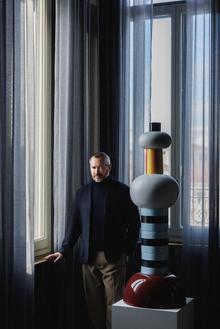04 July 2025 Athens Exhibition Says the Revolution Could Begin on Your Plate | 04 June 2025 Artforum, "Diana Anselmo" | 16 April 2025 Frieze, "Must-See: The Tears of Karl Lagerfeld" | 16 April 2025 Süddeutsche Zeitung Magazin, "Mit welcher Haltung kommt man in der Kunstwelt am weitesten, Maurizio Cattelan?" | 09 April 2025 The Berliner, "Consider Listening: An exhibition urging calm amidst outrage" | 02 April 2025 Wallpaper, "Aboard Gio Ponti's colourful Arlecchino train in Milan, a conversation about design with Formafantasma" | 26 March 2025 Frieze, "Diego Marcon’s Films Conjure a Familiar, Grotesque World" | 19 March 2025 Arts Hub, "1500-degree molten steel installation, inspired by Caravaggio, to drip from the ceiling of Mona" | 15 May 2024 Frieze, "Silvia Rosi Gives Voice to Her Parents’ Migration Story" | 30 March 2024 The Korea Times, "Foreigners Everywhere: Artist duo who inspired this year's Venice Biennale lands in Seoul" | 07 February 2024 Artnet News, "Ceramics Are as Contemporary as a Smartphone: Chiara Camoni on Her Tactile Sculptures"
How (Well)
Known Is
Contemporary
Italian
Art
Abroad?
exhibitions
 Paola Pivi’s exhibition I don’t like it, I love it opens at AGWA in Australia
Exhibition05 November 2025
Paola Pivi’s exhibition I don’t like it, I love it opens at AGWA in Australia
Exhibition05 November 2025
 Maurizio Cattelan Awarded the Preis der Nationalgalerie 2026
Agenda31 October 2025
Maurizio Cattelan Awarded the Preis der Nationalgalerie 2026
Agenda31 October 2025
 "Art Under 35: The Foreign Challenge"
Exhibition18 September 2025
"Art Under 35: The Foreign Challenge"
Exhibition18 September 2025
 Italy and Lithuania in Kaunas: An Encounter between Nature and Creativity
Echoes Between Forests and Mountains is the collateral exhibition of the 15th Kaunas Biennial (Lithuania), a collaboration between the Directorate-General for Contemporary Creativity of the Ministry of Culture, the Italian Cultural Institute in Vilnius, the Kaunas Biennial and the Gherdëina Biennial.
Italy and Lithuania in Kaunas: An Encounter between Nature and Creativity
Echoes Between Forests and Mountains is the collateral exhibition of the 15th Kaunas Biennial (Lithuania), a collaboration between the Directorate-General for Contemporary Creativity of the Ministry of Culture, the Italian Cultural Institute in Vilnius, the Kaunas Biennial and the Gherdëina Biennial.The exhibition will be on display at the Kaunas City Museum and the Meno parkas Gallery from 12 September to 9 November 2025. It offers a stimulating dialogue between Italian artists — such as the Atelier dell'Errore collective, Arnold Holzknecht (Val Gardena, 1960) and Ruth Beraha (Milan, 1986) — and Lithuanian artists, including Aistė Ambrazevičiūtė, Andrius Arutiunian and Maximilian Oprishka.
The exhibition explores the complex relationship between nature, myth, technology and human intervention, inviting viewers to reflect on ecological processes, human stories and possible futures. The selected works offer new perspectives on the world, questioning the anthropocentric view and revealing the tension between beauty, instability and mystery.
The project is part of a broader two-year programme (2025-2026) dedicated to cultural exchange between Italy and Lithuania, aimed at promoting the artistic talents of both countries. The collaboration will conclude in 2026, when three Lithuanian artists will be guests at the 10th Gherdëina Biennale in Val Gardena (BZ), from 29 May to 13 September.
Atelier dell'Errore (AdE) is an artistic collective based in Reggio Emilia, dedicated to the visual and performing arts. Founded in 2015 by artist Luca Santiago Mora, the group now consists of 11 young neurodivergent artists.
interviews
discover more Luca Bombassei
Being a Patron Today: Connecting, Listening, Acting
Curators
11 June 2025
Luca Bombassei
Being a Patron Today: Connecting, Listening, Acting
Curators
11 June 2025
 Valentino Catricalà
Invisible Talents: The Paradox of Italian Art Abroad
Curators
11 June 2025
Valentino Catricalà
Invisible Talents: The Paradox of Italian Art Abroad
Curators
11 June 2025
 Vittoria Matarrese
Italian Art, a Global Vocation in a Local System
Curators
11 June 2025
Vittoria Matarrese
Italian Art, a Global Vocation in a Local System
Curators
11 June 2025
 Francesca Guerisoli
Greater Public Support for the Production and Promotion of Artistic Work
Francesca Guerisoli
Greater Public Support for the Production and Promotion of Artistic Work
artists
public support
discover morePublic support
The Italian Council is a program promoted by Ministero della Cultura, through Direzione Generale Creatività Contemporanea, with the aim of supporting and enhancing contemporary Italian creativity at the international level. Active since 2017, the program has progressively expanded its areas of intervention, including the production of new works, international promotion, artistic residencies, and editorial projects. Since 2020, it has also supported Italian curators involved in exhibitions abroad, strengthening the dialogue with global cultural institutions. The initiative is structured around three main areas: expansion of public collections, international promotion, and talent development. With funding of up to 80% of project costs, the Italian Council today represents a point of reference for Italian artists, curators, and critics engaged in the contemporary cultural landscape.
© All rights reserved
Tax insights
Taxation in the
circulation of artworks
The art market is configured not only as a cultural and professional sphere for artists and curators, but also as a significant economic sector, capable of attracting the interest of investors, collectors, institutions, and professionals. However, the tax and regulatory framework governing its dynamics is heterogeneous at the international level, with significant differences from one legal system to another. In this context, a comparative analysis proves essential to identify opportunities and address the challenges that characterize cross-border operations in the art world.
In an effort to provide a comprehensive overview, several of the most relevant countries — both European and non-European — have been examined in order to understand how different legal and tax systems relate to the circulation, ownership, and transfer of works of art.
Section prepared by Studio Lombard DCA
© All rights reserved
legal aspects
discover moreArt Beyond Its Borders
The international circulation of works of art is a constant throughout history. What has changed over time is the value that communities have attributed to these objects, which were long considered solely for their aesthetic merit and as instruments for the display of power—power being a frequent (and interested) patron. Starting in the 19th century, artworks progressively acquired an identity-related value, becoming symbols around which communities recognize and unite themselves. Today, a "cultural asset" is broadly defined as a "testimony having value as a civilization" (Franceschini Commission, 1964). The material object that serves as its physical support must therefore be considered not only in its tangible form, but also as a vehicle for an intangible value—artistic, historical, archaeological, archival, and so on—that determines its cultural and social significance (as well as the need for specific legal protection). By virtue of this, the Treaty on the Functioning of the European Union, while establishing the principle of the free movement of goods within the internal market (Articles 34 and 35), allows Member States to impose restrictions and prohibitions on trade for the purpose of protecting national artistic, historical, or archaeological heritage (Article 36).
Section curated by CBM & Partners
© All rights reserved




